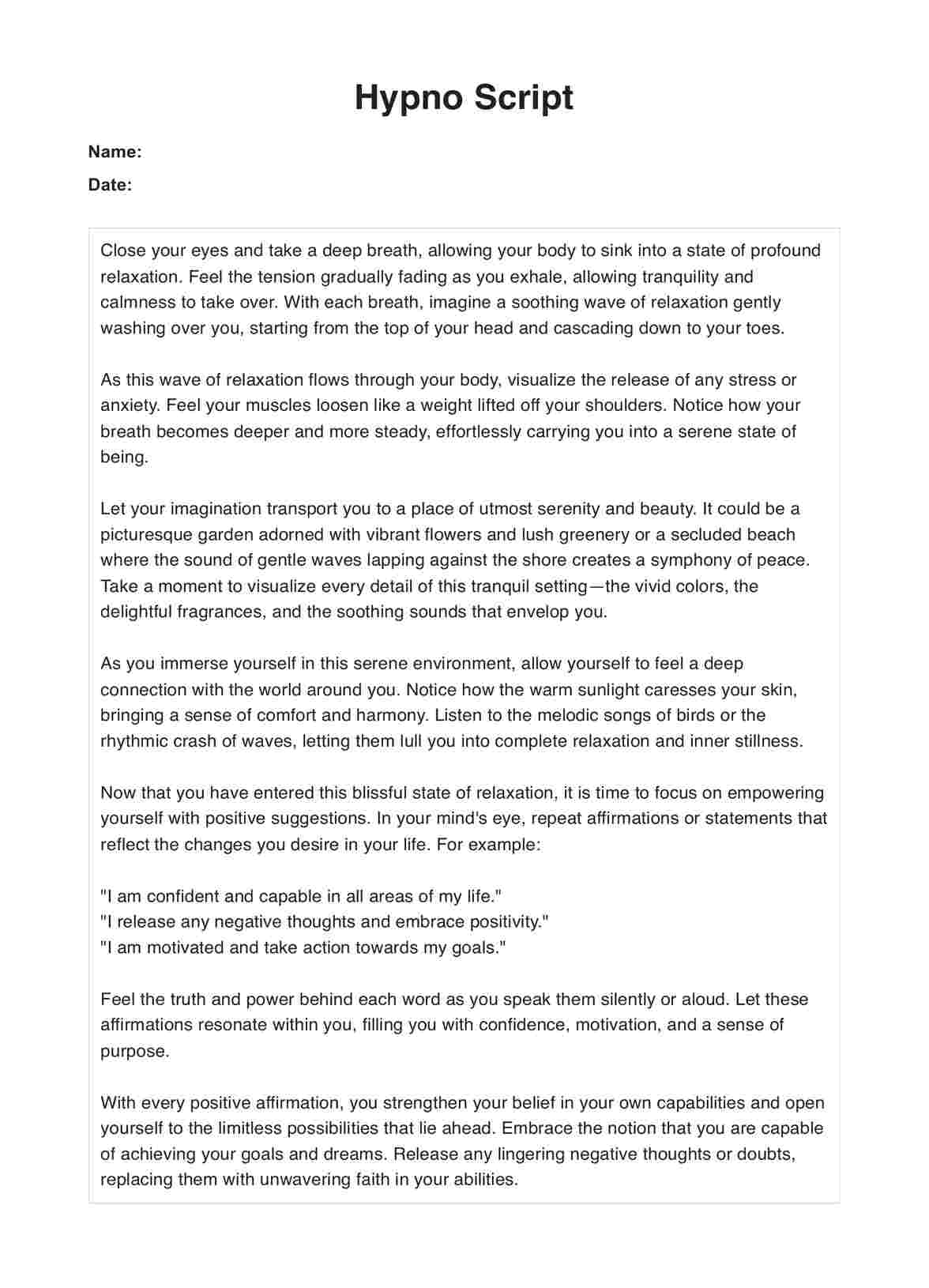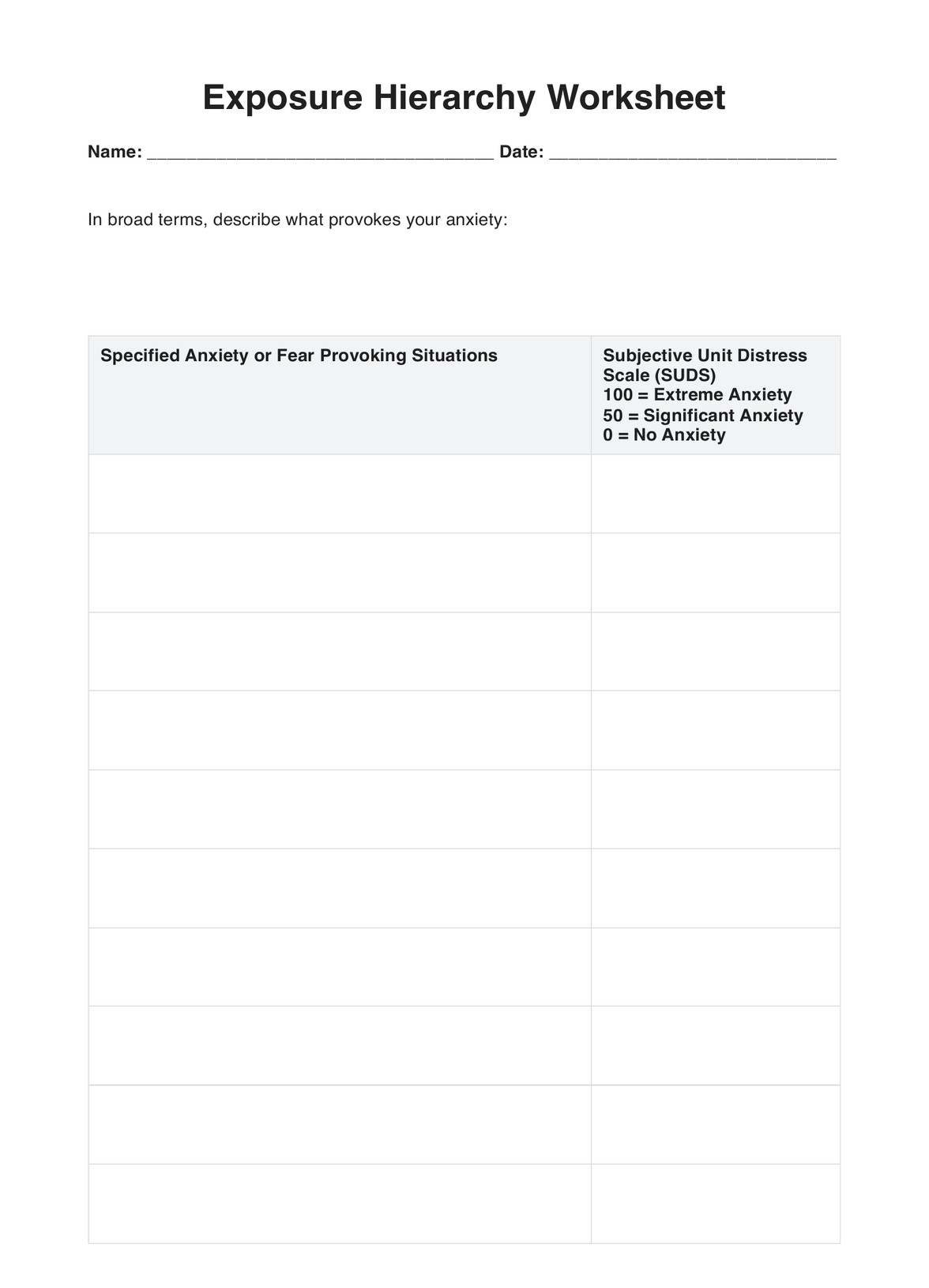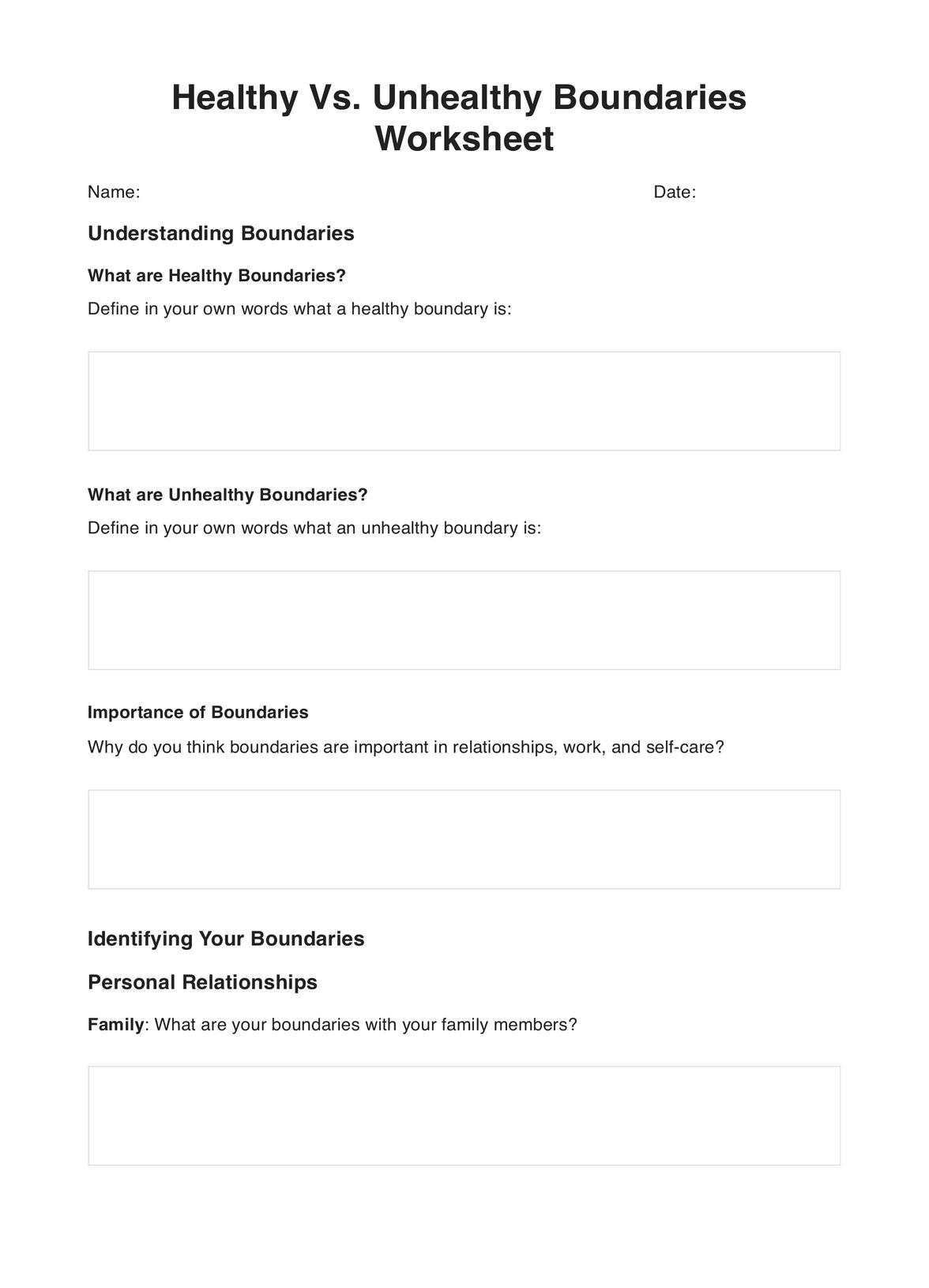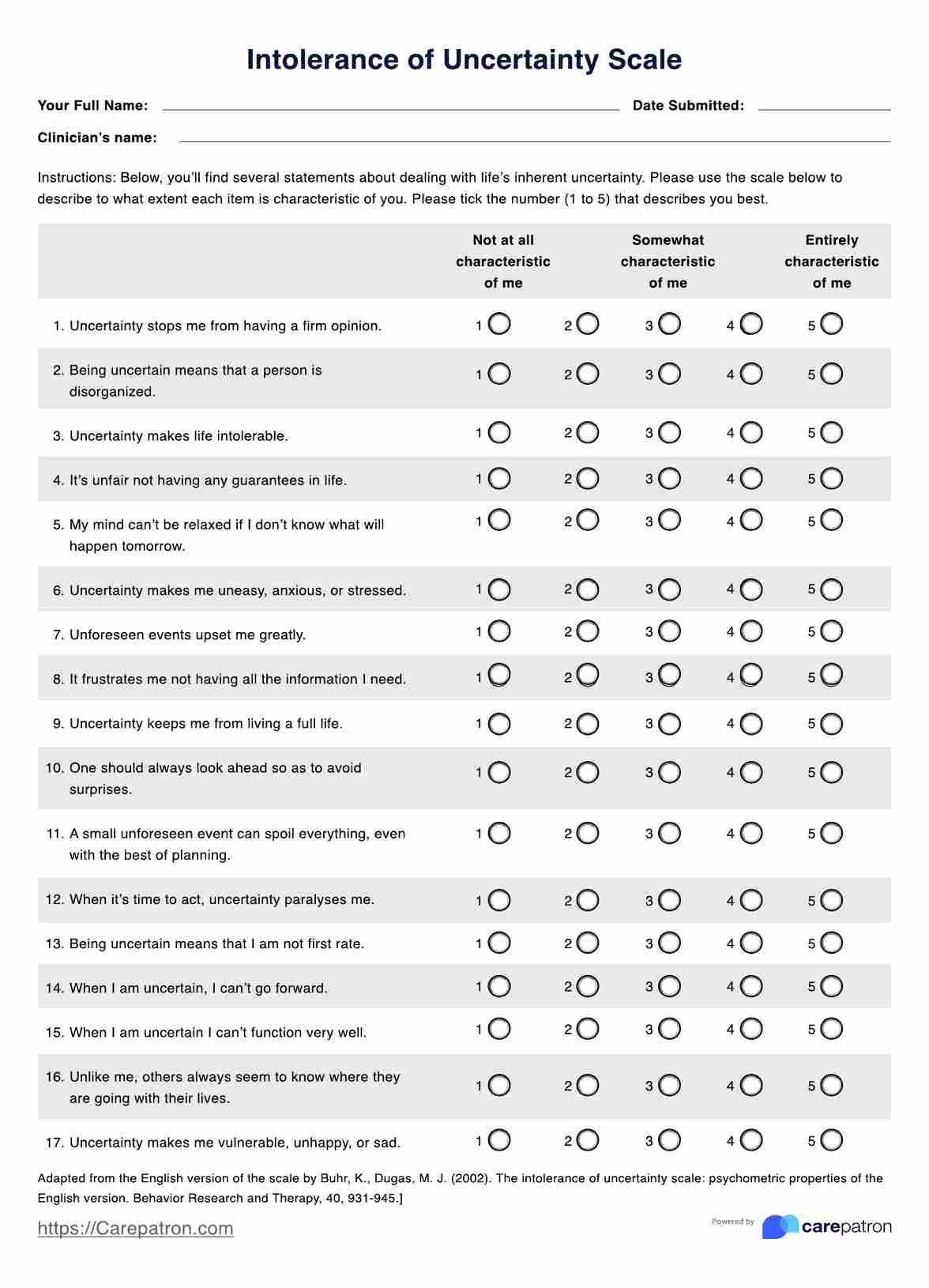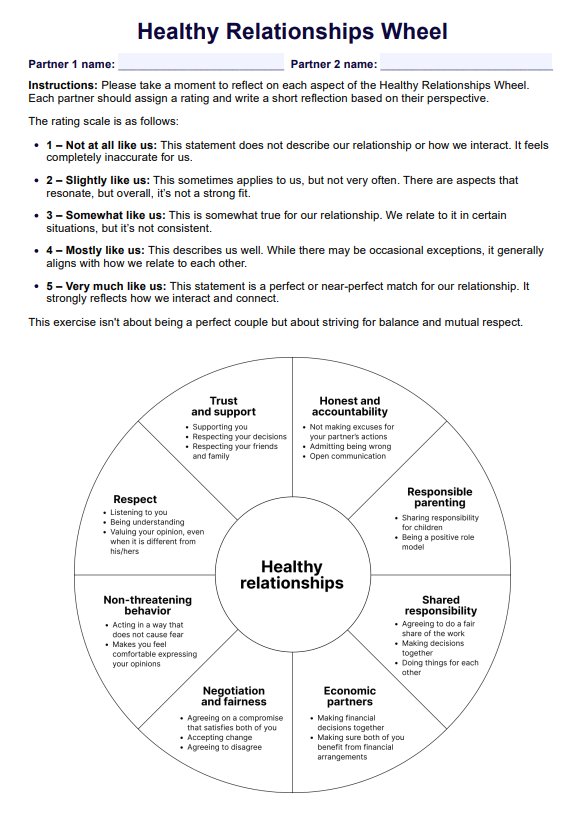Treatment Plan For Adjustment Disorder
Use our adjustment disorder treatment plan template to plan to foster higher clinical outcomes and alleviate clinical stress.


What is a Treatment Plan for Adjustment Disorder?
A Treatment Plan for Adjustment Disorder is a comprehensive and individualized roadmap designed to address the multifaceted challenges associated with this mental health condition. Characterized by physical, emotional, or behavioral symptoms triggered by stressful life events, adjustment disorder necessitates a tailored approach to enhance coping skills and promote overall well-being. This plan serves as a guiding framework for mental health professionals as they collaborate with individuals diagnosed with adjustment disorders.
The treatment plan encompasses evidence-based interventions that focus on alleviating adjustment disorder symptoms, fostering resilience, and enhancing the individual's ability to navigate and adapt to life's challenges. Mental health professionals can employ various therapeutic modalities, such as talk therapy, group therapy, and dialectical behavior therapy, to address emotional symptoms and provide valuable coping strategies. The plan recognizes the diversity of adjustment disorder presentations, including subtypes like adjustment disorder with anxiety, adjustment disorder with depressed mood, acute adjustment disorder, and adjustment disorder unspecified, ensuring a nuanced and targeted intervention before it progresses into a major depressive disorder.
Furthermore, healthcare professionals, including doctors and nurses, can utilize the treatment plan to coordinate holistic care approaches. By integrating a patient-centered approach, the plan considers factors such as symptom severity, risk factors, and underlying contributors, facilitating a comprehensive understanding of the individual's unique circumstances.
Incorporating a mix of therapeutic techniques, coping skills enhancement, and a focus on healthy lifestyle choices, the Treatment Plan for Adjustment Disorder empowers individuals to navigate their recovery process successfully. By addressing the various dimensions and behavioral, emotional, and physical symptoms of adjustment disorder, this plan stands as a valuable tool to guide both individuals and healthcare professionals toward a more balanced and resilient mental health outcome.
Treatment Plan For Adjustment Disorder Template
Treatment Plan For Adjustment Disorder Example
How to use this Treatment Plan for Adjustment Disorder template
To implement adjustment disorder treatment plans effectively, following these simple steps is recommended:
Step 1: Download the treatment plan
The first step is to click the link on this page to download the adjustment disorder PDF treatment plan. This should open automatically within your designated software, and all sections are editable, meaning you can hit the ground running immediately. If you wish to handwrite, then feel free also to print this form. However, make sure that you scan the document back onto your device when completed.
Step 2: Complete the treatment plan with your patient
Of course, the next step is completing the treatment plan in collaboration with your patient. This is the longest step; ideally, you fill this out during your session to prioritize patient needs and prevent information from being missed. If you'd like, you can also take some time following your appointment to flesh out certain steps and provide greater detail like which therapy helped them with other mental health conditions they may have experienced in the past.
Step 3: Secure the treatment plan in a HIPAA-compliant platform
Once the treatment plan is complete, you must store the document, and other relevant documents you used, like an adjustment disorder PDF or dialectical behavior therapy PDF, within a secure platform or database that prioritizes HIPAA standards and regulations. This is the best way to protect and safeguard patient information and avoid fines.
Who can use this printable Treatment Plan for Adjustment Disorder (PDF)?
The Printable Treatment Plan for Adjustment Disorder (PDF) is a versatile resource that a diverse audience can effectively utilize to address the complexities associated with adjustment disorder. Here's a list of who can use and benefit from using this printable Adjustment disorder Treatment Plan:
- Individuals diagnosed with adjustment disorder: They can benefit significantly from this resource, as it offers a patient-centered approach to managing their unique behavioral, anxiety, and depressive symptoms and enhancing coping skills.
- Mental health professionals, including therapists, counselors, and psychologists: They can leverage the treatment plan to guide their clients through evidence-based interventions such as talk therapy, group therapy, and dialectical behavior therapy.
- Healthcare providers, including doctors and nurses: They can use the treatment plan to enhance their patient care strategies, providing comprehensive support for individuals undergoing recovery.
Whether a patient seeking to manage their mixed anxiety and depressed mood or symptoms or a mental health professional tailoring interventions, the Printable Treatment Plan for Adjustment Disorder is a valuable tool to promote holistic well-being and facilitate the journey towards improved mental health.
Benefits of using the adjustment disorder treatment plan template
Adjustment disorder treatment plans have various uses for mental health therapists, including the following:
Track client progress
One of the most important factors of incorporating treatment plans is that you can track client progress over time. You can evaluate intervention efficiency and effectiveness and how the client responds to specific aspects of mental health treatment. These forms serve as excellent reference points for you to reflect on over time, and you can work towards developing a more effective treatment that directly addresses the other mental disorders or mental health problems and concerns at hand.
Enhance organization and simplify workload
Additionally, utilizing this treatment plan means you can elevate the quality and level of organization within your practice. You can monitor various factors that account for your client's mental health conditions and reduce the amount of paperwork and administration that can accompany client cases. Not only this, but you can work to streamline your business processes with a more simplified workload.
Legal and insurance accountability
If you are in a court situation, you can utilize treatment plans as court evidence to demonstrate professional expertise and judgment. These treatment plans also allow you to note any instruments or tools used that insurance may require for reimbursement purposes, which is also a great way to reduce rejected claims and receive higher revenue that is accurate to every case.
Develop cognitive frameworks
These treatment plans serve as excellent reference documents for you to refer to across cases and can work towards developing a more unified approach to assessing clients with adjustment disorder. Standardize your practices, and ensure that you are treating each patient with the same quality of care and level of treatment, with these treatment plans aiding in developing cognitive techniques relevant to the mental illness.
Commonly asked questions
Although this is a somewhat relative question, it is important to consider a couple of these tips and tricks to create a treatment plan. Firstly, you must maintain an objective stance at all times. Not only does this reinforce higher clinical and professional expertise, but it also means that you can safely refer your clients to other healthcare practitioners if needed, and they can pick up where you left off. You should also maintain excellent grammar for greater clarity, with no abbreviations used to minimize confusion. You should note down all relevant evidence about the patient's condition and write succinctly.
It is always recommended that you create a person-centered or humanistic adjustment disorder treatment plan. This means always prioritizing the client's needs, health goals, and preferences and not forsaking the client's experiences and feelings for consistently high results. Adjustment disorder plans need to be sustainable, and preserving your client's needs at the center of your operations is the easiest way to achieve this. This may mean compromising on traditional approaches at times.
Only authorized users can edit the treatment plan, which usually refers to the mental health practitioner who is directly assessing the client. This is because treatment plans contain highly confidential information, including notes and medication information that could cause serious harm if altered without permission.



















-template.jpg)





















































































